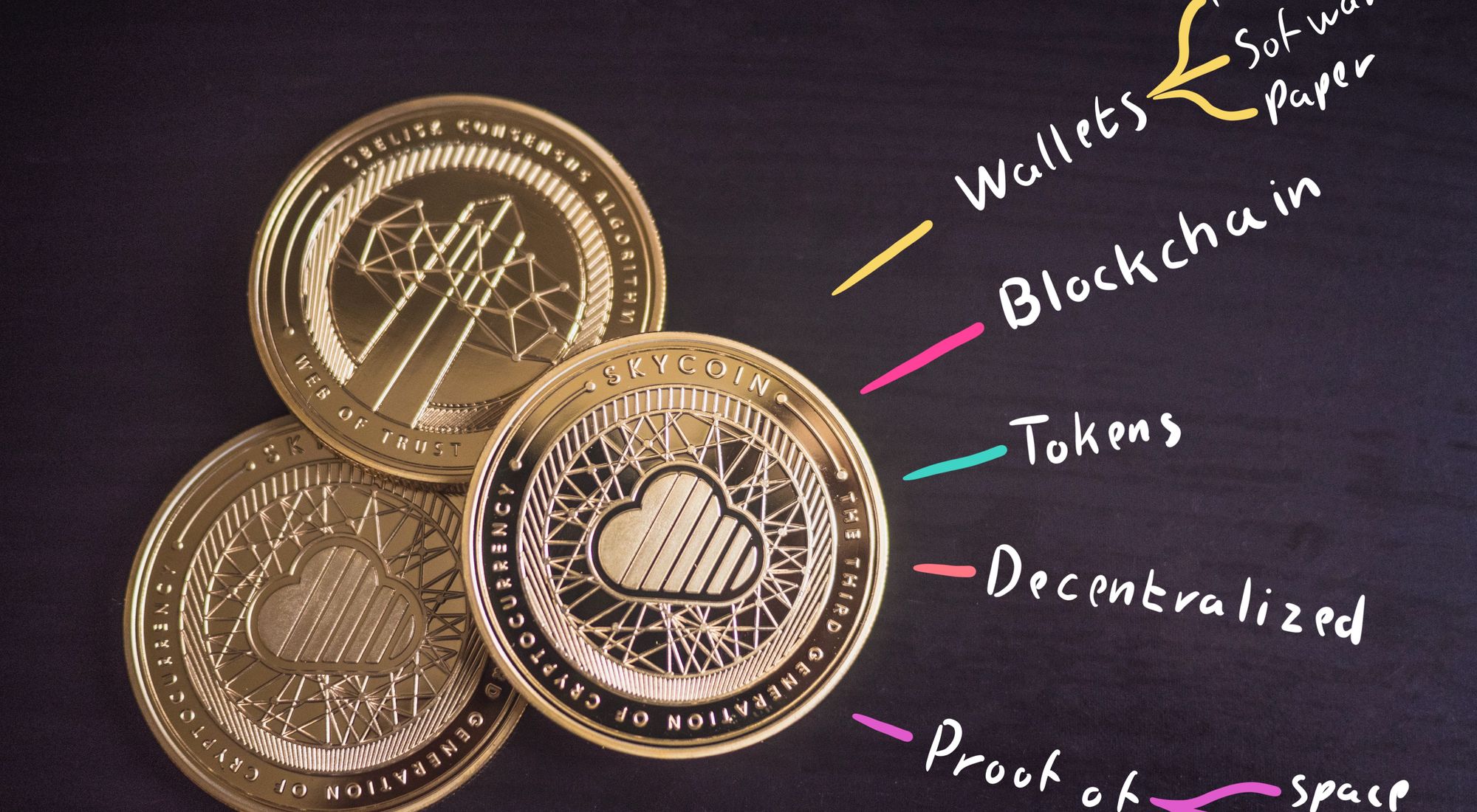Interactive map of Cryptocurrency
Cryptocurrency is going mainstream but its inner workings remain unknown to most. Start your journey to an intuitive understanding with this interactive map.

Cryptocurrency is a topic that has been on the rise over the past few years, and it is not going away anytime soon. However, the inner workings can often be challenging to understand.
In this article, I will share a map illustrating the currencies, aspects, and concepts important in cryptocurrency today. This map will help you get an overview of the topic and an understanding of the different fundamental aspects.
This overview might be helpful if you are curious about getting into decentralized finance or developing advanced blockchain-based applications.
Map of Cryptocurrencies
Take some time to click around the different nodes. There are lots of helpful resources and notes to discover. To get a better view of the map, click the full-screen icon in the bottom right.
As usual, this map is public domain. That means you are free to do with it as you wish. So, feel free to duplicate this map for your own use.
I made this map in a tool I've created. If you want some tips and tricks on how to get started, check out this article.
If you prefer a more linear way of consuming information, I have written an introduction to cryptocurrency below. This is some of the same information you can find in the tree.
Introduction to cryptocurrency
Cryptocurrency is a clever form of digital currency without a central authority, in which transactions are recorded in a distributed shared ledger called a blockchain.
Transactions are verified by computers through a consensus algorithm instead of a human bank.
There are three mains aspects that characterize cryptocurrency:
1. Trustless
The currency does not require trust between the users and does not require the trust of a central authority.
2. Immutable
A transaction can never be changed or modified after it has been completed.
3. Decentralized
The currency is decentralized in theory as no single actor has control over it.
And in practice, the system is distributed across the world, on a vast network of independent computers.
In layman's terms, this means that the end-users of a cryptocurrency only need to trust the system, not any individual. Primarily because the system is based on sound mathematical proofs, with no humans in the loop. And also because no single actor has any power over the system.
The Blockchain
The blockchain is the database or "ledger" used by most types of cryptocurrency.
Instead of a single central database, several computers hold their copy of the blockchain, and they collaborate to verify transactions that are going to be added to the blockchain.
The chain itself consists of a set of linked blocks. Each block contains a reference to the previous block, including the hashed contents of the referenced block. This means that we can not modify a block in the middle of the chain without also making the hashes of newer blocks invalid, because the hashes of the newer blocks will have been derived from the contents stored in this block.
What this means is that once a transaction has been verified and added to the chain, it can never be changed.
When a transaction is created, it is broadcast to the network.
The network, depending on the type of cryptocurrency will then attempt to verify the transaction in one of two ways, Proof of Work (PoW) or Proof of Stake (PoS).
These are called decentralized consensus algorithms. More variations exist, but these two are most commonly used.
In a more clear wording, a consensus algorithm describes how multiple actors can get together to agree on important things, and in this case, what transactions are valid.
Proof of Work
This works by having computers compete to solve a puzzle, the first computer to solve the puzzle, gets to add a new block to the blockchain, this block contains a list of transactions that it has verified and a reward for the computer that solved the puzzle.
What ensures safety is that the computer solving the puzzle has to broadcast the solution to the rest of the network, so the other computers can add the new block to their copy of the blockchain. The new block will be rejected by the other computers if it contains any transactions that can not be verified.
Hence, a computer that solved the puzzle would lose the reward by transmitting bad transactions, and the block would not be accepted by the rest of the network.
Meaning it is in the computer's best interest to not accept false transactions.
Proof of Stake
Proof of Stake works a bit differently, instead of competing to solve a puzzle, the winning computer that gets to add a new block to the network is chosen by a lottery, where the number of coins or tokens the computer owns acts as lottery tickets. The rest of the procedure is the same, the computer would lose the reward by attempting to transmit a bad transaction.
What is quite obvious is that Proof of Stake does not waste as much energy, but might be more susceptible to having small networks being taken over by bad actors.
How coins are created
This explains how new coins are created, as the winner of the lottery or competition gets to add a transaction to himself with new coins as a reward.
And what a coin is, is a chain of transactions, leading all the way from creation to the current owner.
We define a bitcoin as a chain of digital signatures. Each owner transfers bitcoin to the next by digitally signing a hash of the previous transaction and the public key of the next owner and adding these to the end of the coin. A payee can verify the signatures to verify the chain of ownership.
— Satoshi Nakamoto, Bitcoin Whitepaper
What are cryptocurrencies used for
The use of cryptocurrency isn't limited to just sending money back and forth, it also has other uses too. Such as financial tools, advertisement alternatives, file storage, contracts, collectibles, and research.
In general, problems that require multiple actors to collaborate without having to trust each other, tend to be great fits for a blockchain-based solution.
This article is a part of an ongoing series I am creating to map out the breadth of various topics from a birds-eye perspective. If you liked it and want to be notified when the next one is available, it is possible to subscribe at the bottom of the page.
To create this map I have aggregated data from these sources, and the resources linked in the map.
Sources:
- https://en.bitcoinwiki.org/
- https://en.wikipedia.org/wiki/Blockchain
- https://en.wikipedia.org/wiki/Merkle_tree
- https://coinmarketcap.com/alexandria/glossary/proof-of-spacetime
- https://www.kraken.com/learn/types-of-cryptocurrency
- https://learn.g2.com/types-of-cryptocurrency
- https://www.gemini.com/cryptopedia/synthetix
- https://cryptobriefing.com/what-is-nano-introduction-to-bitcoins-speedy-competitor/
- https://en.bitcoin.it/wiki/Hardware_wallet
- https://decryptionary.com/dictionary/software-wallet/
- https://en.wikipedia.org/wiki/Cryptocurrency
- https://www.leewayhertz.com/blockchain-development-key-concepts/
- https://www.ibm.com/topics/smart-contracts
- https://www.investopedia.com/terms/f/fungibility.asp
- https://medium.datadriveninvestor.com/cryptocurrency-basics-3-key-characteristics-and-why-they-matter-7348242abe18
Article photo: Stanislaw Zarychta + some doodles from my girlfriend.

